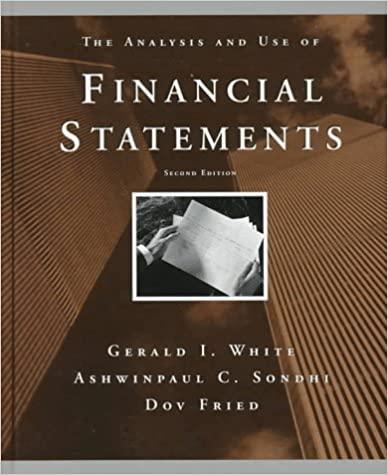Answered step by step
Verified Expert Solution
Question
1 Approved Answer
Now you need to estimate FVW s cost of equity. Once again, the problem is that it is a private company, so its equity returns
Now you need to estimate FVWs cost of equity. Once again, the problem is that it is a private company,
so its equity returns are not directly observable. This means that you cannot use OLS regression to
estimate FVWs beta directly. As before, you decide to follow a peer firm approach, using the same
three comparison firms as before. Your plan is to estimate the equity beta for each of those firms, and
then to convert their equity betas into unlevered betas. Thereafter, you intend to calculate an average
of the unlevered betas for the comparison firms, which you will use as a proxy for FVWs unlevered
beta. Next, you plan to convert this proxy unlevered beta into an equity beta for FVW using its debt
toequity ratio. Finally, the estimated value for FVWs equity beta will be used to determine its cost of
capital.
The worksheet Market Data contains monthly observations for the Interbank Overnight Cash Rate
ONCR for the period from January to April as well as monthly values for the S&PASX
Index XKO and monthly share prices for Australian Vintage AVG Lark Distilling LRK and Treasury
Wine Estates TWE The cash rate data was downloaded from the website of the Reserve Bank of
Australia, and everything else was download from Yahoo Finance. The index values and the share prices
have been adjusted for dividends, so the price returns you calculate using that data will include the
effect of dividends.
The worksheet Question provides a space for you to estimate FVWs cost of equity. Use the data in
Market Data worksheet to estimate the equity betas for the three comparison firms. To unlever those
betas, you will need the debttoequity ratios for the comparison firms. The easiest way to get them is
by clicking FINANCIALS tab on the Wall Street Journal page for each of the firms. This will take you to a
page that presents the financial ratios for the firm.
Once you have obtained FVWs unlevered beta, as a weighted average of the unlevered betas of the
comparison firms, and you have used FVWs debttoequity ratio to convert its unlevered beta back
into a levered equity beta, you are ready to use the SML equation to calculate its cost of equity. For
this you will need estimates for the riskfree rate and the risk premium on the market portfolio in
Australia. These values can be obtained from MarketRiskPremia.com.
State your estimate for FVWs cost of equity in your report and explain you obtained it You should
present the details of your beta estimates for the comparison firms, including scatter plots and graphs
of the best fit lines for the regressions, as part of your explanation. You should also provide the outputs
from your regressions in your report and explain the regression results.
ALL i want is is the estimate Equity betas for XLOR, Australian vintage, lark distilling and Treasury wines. Can you provide a solution using regresion model like CAPM to estimate. You would need to find the montly return for each stock, use ONCR as risk free rate but convert it to monthly as it in annual rate. Also i think you would need to find out excess stock returns by doing stock returns ONCR after converted to montly to help find the CAPM
please complete the entire market data to find the CAPM equity beta for each of those firms.READ THE PROMPT ABOVE TO HAVE A CLEARER UNDERSANDING of what is required. Provide calculations and steps not just explanation pleaseee

Step by Step Solution
There are 3 Steps involved in it
Step: 1

Get Instant Access to Expert-Tailored Solutions
See step-by-step solutions with expert insights and AI powered tools for academic success
Step: 2

Step: 3

Ace Your Homework with AI
Get the answers you need in no time with our AI-driven, step-by-step assistance
Get Started


